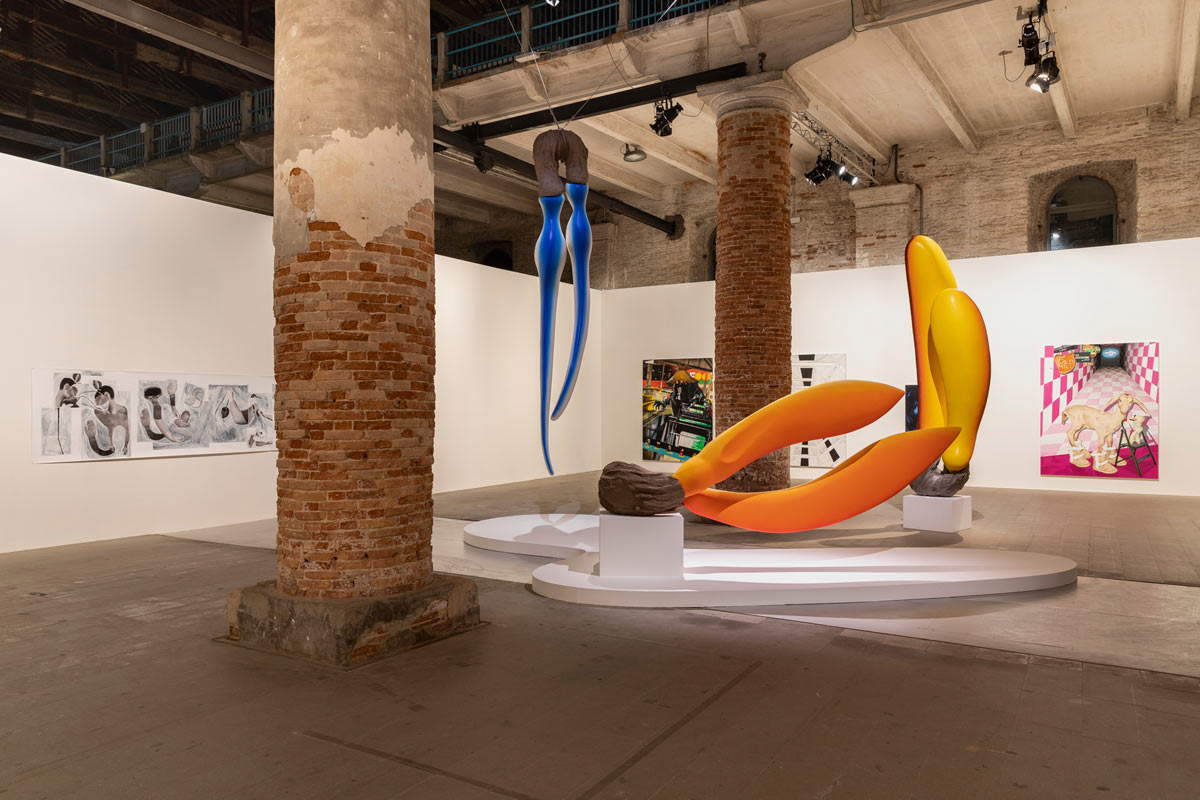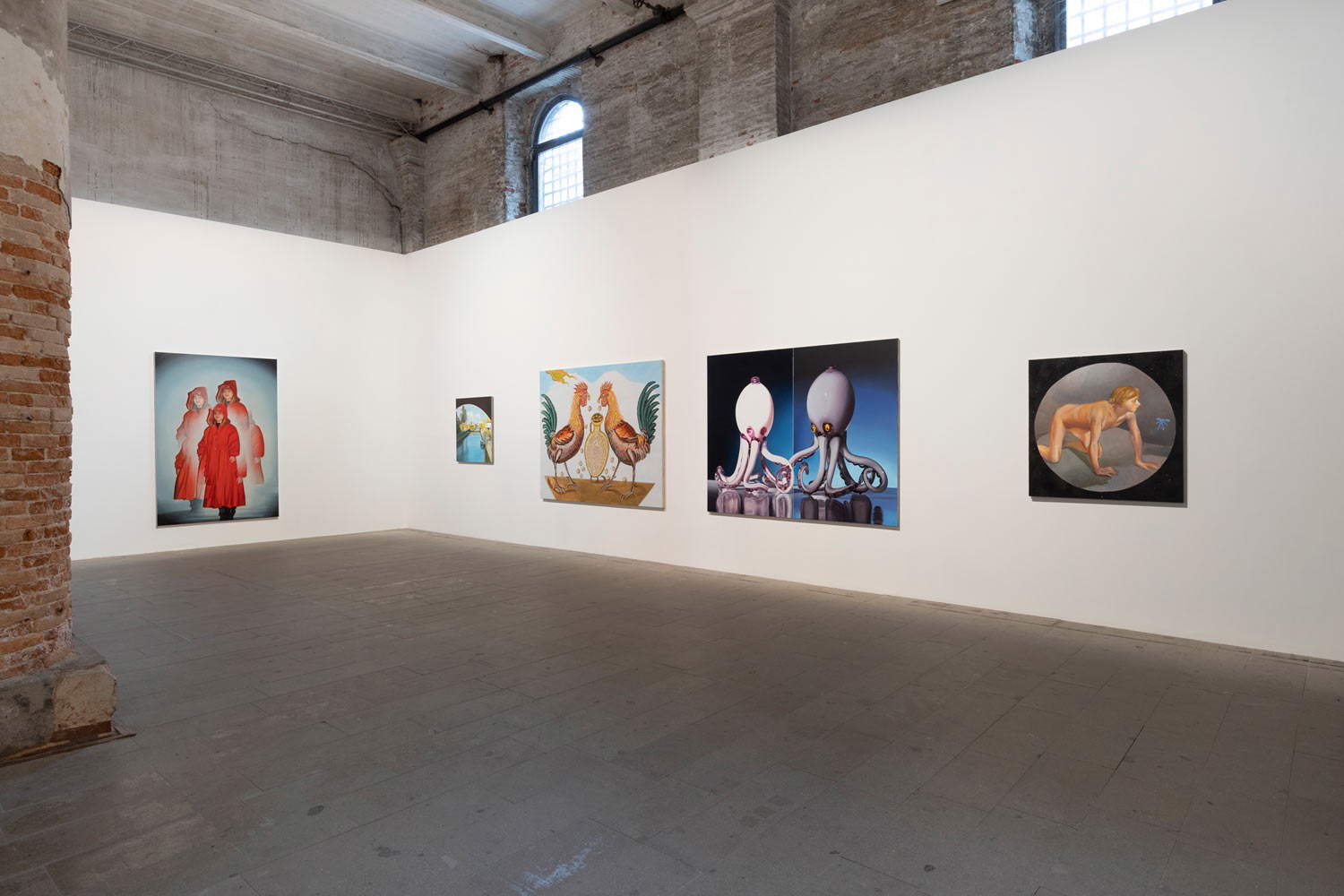If the specific phenomenology of Museum fatigue, an “admitted evil” for which Benjamin Ives Gilman tried to find some remedy as early as 1916, has been recognized for more than a century, not as much attention has been paid to the fatigue, centripetal and centrifugal, to which the visitor, however happy, of the Venice Biennale is subjected. However happy because, beyond the effectiveness and the tightness of the exhibition proposal of the central show, each time a difficult and sometimes exhilarating gamble for the curator and, since a few editions just now, for the curator on duty, it is each time a small victory to finally cross the gates of the gardens, to which more and more often one arrives already worn out by a waiting time that part, unfortunately still neglected by artists and mediators, of the biennial experience. And this is now also true for the once-privileged audience of the three effervescent and impossible days of the preview, that international and very provincial people made up of journalists, industry professionals, collectors, gallerists, museum friends, artists, a few stubborn scholars, and many curators and advisors, who, thanks in part to the shrewd choice by the biennial to sell at a high but nevertheless welcome price the’access to the vaunted lunapark of the pre-opening days, now find themselves practicing the polyglot worldliness of the queues, which stretch neatly in front of the entrances to the main venues (the gardens, precisely, and the Arsenals) and then inside, in front of the most popular pavilions.
Seen from the bar of the biennale’s Giardini, this year occupied by sandbags as a reminder that the national, universal expo criterion of the pavilions, with their constant transformations (where there was Yugoslavia today there is, to take just one example, Serbia), outside has the smell of blood and the sound of bombs, the world of contemporary art does not look at all like an elite enclosure. Perhaps Sylvain Bellenger, director of the Museo e Real Bosco di Capodimonte, is right when he argues that contemporary art is no longer an enclave reserved for a special, intellectual, “elegant and sexy” audience, as Pierre Rosenberg defined it just at the end of the last century, and that the works of the present are the ones that intercept visitors’ questions.



What is certain is that, despite the fact that in our schools contemporary art finds residual space, to say the least, and despite the fact that in the universities themselves, where the teaching of contemporary art covers a chronological span from the early 19th to the 21st century, the most recent finds little attention, the Venice Biennale with its impressive and steadily growing numbers would seem to confirm the wide interest in proposals coming from living artists, in some cases - I think of Marina Abramović - who have become as popular as rock stars. Yet the not-always (not yet) so crowded halls of the many contemporary art museums that finally dot all of our country (including the islands), signal that that of the Venetian Biennale is a case apart. For its history, certainly (the Venice one, born in 1895, is the mother of all the endless biennales that have chased each other in recent decades in both hemispheres, reviews whose capacity we will now have to verify, in the post-pandemic and geopolitical crisis phase, the of resilience) but also because of its relation to a city, Venice, which is on the brink of the museum precipice, loss of use value and ultimate window dressing, and which precisely in the art (in the arts) of the present seeks to find oxygen and perspective.
Visiting the biennial means not only encountering the subjects and thoughts that traverse our uncertain time but also having the illusion of taking a tour of the world, that is, of that part of the world that has found the resources and motivation to show itself. Well knowing that absences are often more significant than presences-how many, this year, have photographed themselves and will photograph themselves in front of the barred Russian Pavilion? - and that in no way, not even in its best editions, has the Biennale ever been able to offer a comprehensive survey of the art of the time. It can, and this it does very well, suggest visions and produce words, annoy and amaze, in a play of tensions that despite comfortable shoes and strategic pauses, cannot fail to exhaust even the most experienced visitor. Between the centripetal stresses that induce one to exercise a microscopic gaze on the individual work and the centrifugal pushes that lead the audience to want to confront the dizzying extension of the national venues spread throughout the lagoon and the endless collateral events, theonly possibility of salvation lies in the awareness, which is in any case the result of experience, that one does not have to understand or even see everything, what counts is to be available to the encounter, with the works and above all with the people. Because the Biennial, before being a frame that showcases our time, is a crossroads, always different, of gazes and questions.
This contribution was originally published in No. 14 of our printmagazine Finestre Sull’Arte Magazine.Click here to subscribe.
Warning: the translation into English of the original Italian article was created using automatic tools. We undertake to review all articles, but we do not guarantee the total absence of inaccuracies in the translation due to the program. You can find the original by clicking on the ITA button. If you find any mistake,please contact us.